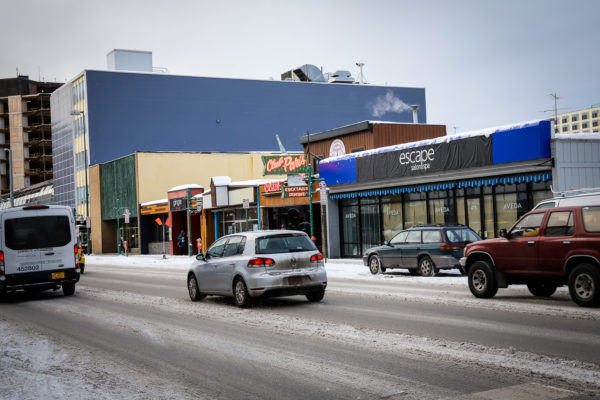
With a new emergency order in place this week, Anchorage restaurants are allowed to open at full capacity as long as they maintain social distancing and masking requirements. While some may see it as a positive step toward returning to business as usual, some restaurants are still frustrated by the remaining restrictions — and others are concerned more customer interaction could lead to more COVID-19 transmission.
When Bernadette Bradley, owner of The Bradley House on Old Seward, first heard about the latest emergency order, she was excited.
“Initially, I thought, ‘Wonderful, this is awesome!'” Bradley said. “Until I saw attachment D, read through it, and realized the only change … is that I can stay open until 2 a.m. Everything else is still the same.”
Because while the new guidelines allow all businesses to open at full capacity, it still requires customers to wear masks and social distance. For Bradley, spacing tables six feet apart as required cuts her capacity in half.
“So it’s still damaging,” Bradley explained.
Bradley lost more than two-thirds of her business in 2020. This year is starting out slow, too. She and a few of her staff recently got their vaccines, but she thinks it will probably still be awhile before things get back to normal.
Federal and municipal aid helped get Bradley House through the last year, but Bradley said at the same time the city’s mandates have felt “oppressive.”
“The mental anguish for a lot of restaurant and bar owners that I’ve talked to, it’s just unbelievable,” she said.
In a briefing announcing the new order last week, Acting Mayor Austin Quinn-Davidson said rolling back capacity restrictions is the beginning of a return to normalcy, but until vaccinations are widespread, masking and distancing will remain necessary.
“By and large, we’re in a pretty open landscape right now,” Quinn-Davidson said. “It’s really just that distancing and masking. So, I would expect that we would hang on to that for a little bit.”
Heidi Heinrich, co-owner and longtime waitress at the Lucky Wishbone, said despite the need, it feels like a big risk to allow businesses to open at 100% capacity.
“It’s been a very scary time for this business, there’s no question about it,” Heinrich said. “You have to weigh the health factors and the business factors. And it’s so hard.”
The Lucky Wishbone hasn’t been open for sit-down dining in nearly a year. Heinrich said it will be another month before they finish working out the logistics of how to make the dining room a safe place to eat.
“We’re going to do the best we can with barriers between our booths. All of the small table service will probably be gone. The counter service is completely different, because either you have to be with the same party or you have to be six feet apart, which is very difficult,” she said.
There’s also the question of whether guests will feel comfortable returning to indoor dining at the level they used to.
Bradley already has customers waiting in their cars in the parking lot for a table — she won’t have trouble filling her restaurant, she said.
Roscoe Wyche, who owns Roscoe’s Catfish and Barbeque downtown, said he thinks it will take some time for some people to start eating out again.
“There’s people that are not comfortable coming out now. And I think that just because the emergency order has been established, there’s still going to be some people that are not going to come out yet,” Wyche said.
Anchorage’s hospitality industry has already been hard-hit by multiple shutdowns over the last year. Heinrich worries more indoor dining could lead to a spike in COVID-19 cases.
“We could go backwards if people aren’t careful. And to go backwards, some of those restaurants that are going to be saved by having this opportunity, they’re going to lose everything if they have to close again.”
Heinrich said it’s up to the public to follow the guidelines to protect themselves and local restaurant workers: By wearing masks, keeping their distance, and if they can, getting vaccinated.
Kavitha George is Alaska Public Media’s climate change reporter. Reach her at kgeorge@alaskapublic.org. Read more about Kavitha here.





